#lewis center ohio
Explore tagged Tumblr posts
Text

OH Lewis Center - Olentangy Orange High School Painted Parking Spot 5 by Ken
3 notes
·
View notes
Text

Fire in the Forest
Seen near Lewis Center, Ohio.
164 notes
·
View notes
Text
0 notes
Text

We’re pleased to announce that 256,444 photographs from NASA’s Glenn Research Center have recently been added to the National Archives Catalog. The photos document facilities, personnel, and aeronautic and space technology development at the Glenn Research Center (GRC) in Cleveland, Ohio and at Plum Brook Station1 in Sandusky, Ohio. Also included are publicity photos, as well as images documenting various types of accidents. The photographs in this series were taken between 1943 and 2004; as such, many of the photos are credited to NASA in addition to its predecessor, the National Advisory Committee for Aeronautics (NACA).
172 notes
·
View notes
Text











63 notes
·
View notes
Text

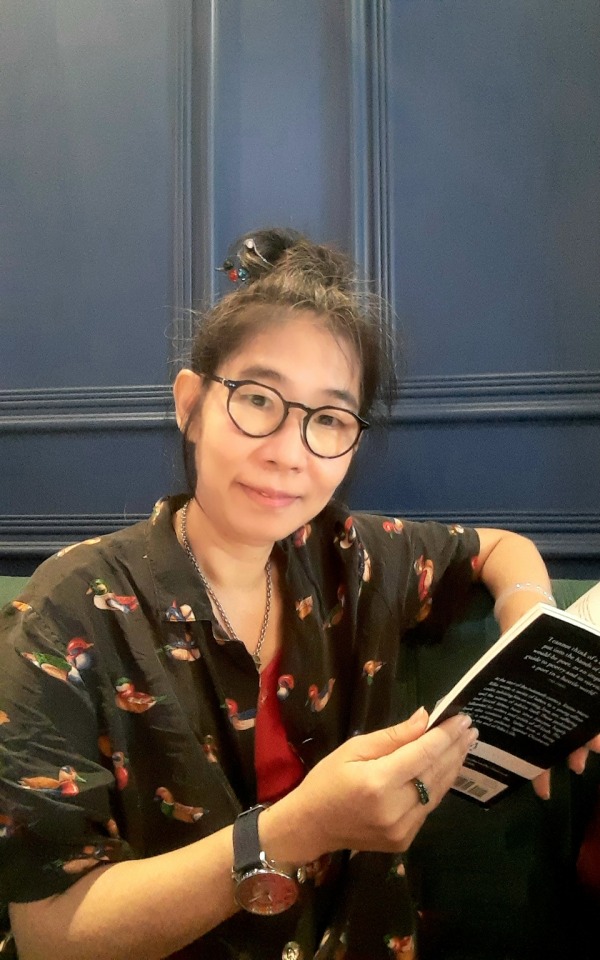











下午我又去咖啡店做些我的皮雕工作、看書和避暑 lol … 熱到想要成天都浸泡在俱樂部的游泳池裡。 hahaha
In the afternoon I went to the coffee shop again for doing a part of my leather works, read and escape the heat lol…it was so hot that I wanted to soak in the club's swimming pool all day long. hahaha 😁😆😛 Lan~*
Rainer Maria Rilke 《Letters to a Young Poet》
譯者:Charlie Louth (Translator)
出版社:PENGUIN BOOKS LTD.
里爾克: 軍旗手、致年青詩人十封信 (中文版)
The Love and Death of Cornet Christopher Rilke/ Letters to a Young Poet
作者:萊納.瑪利亞.里爾克; 張錯/ 評析
譯者:張錯
出版社:商周出版
萊納·瑪利亞��里爾克(Rainer Maria Rilke,1875-1926)在慕尼黑和布拉格學習文學、藝術史和哲學,通常被認為是二十世紀最偉大的德語詩人之一。他最著名的兩首詩集是《俄耳甫斯十四行詩》和《杜伊諾輓歌》。他最著名的兩部散文作品是《給一位年輕詩人的信》和半自傳《馬爾特·勞裡茲·布里格的筆記本》。
Rainer Maria Rilke (1875–1926) studied literature, art history, and philosophy in both Munich and Prague and is often considered one of the German language's greatest twentieth-century poets. His two most famous verse sequences are the Sonnets to Orpheus and the Duino Elegies; his two most famous prose works are Letters to a Young Poet and the semiautobiographical The Notebooks of Malte Laurids Brigge.
查理·勞斯 (Charlie Louth) 是牛津大學女王學院的研究員,以德語授課。他是《荷爾德林與翻譯動力》一書的作者。
Charlie Louth is a fellow at Queen's College, Oxford, where he lectures in German. He is the author of Hölderlin and the Dynamics of Translation.
路易斯‧海德 (Lewis Hyde) 是暢銷書《禮物》(The Gift) 的作者。海德是麥克阿瑟研究員、哈佛大學大學部學生創意寫作主任,也是哈佛大學伯克曼網路與社會中心的研究員。他住在麻薩諸塞州劍橋和俄亥俄州甘比爾。
Lewis Hyde is the author of the hundred-million-copy bestseller The Gift. A MacArthur fellow and former director of undergraduate creative writing at Harvard University, Hyde is a fellow at Harvard's Berkman Center for Internet and Society. He lives in Cambridge, Massachusetts, and Gambier, Ohio.
萊納·瑪利亞·里爾克(Rainer Maria Rilke)寫給一位有抱負的年輕詩人的有力感人的信。 二十世紀初, 里爾克 (Rainer Maria Rilke)給一位年輕的軍官學員寫了一系列信,在寫作、愛情、性、痛苦以及建議本身的性質方面向他提出建議。這些深刻而抒情的信件從此對包括女神卡卡和佩蒂·史密斯在內的幾代作家和藝術家產生了巨大影響。裡爾克的信充滿了誠實、優雅和對作為藝術家常常伴隨的孤獨的深刻理解,是靈感和安慰的無盡源泉。劉易斯·海德的新介紹探討了這些信件的寫作背景,以及作者如何將孤獨視為一種創造力。該版本也收錄了里爾克的晚期作品《青年工人的來信》。 80 多年來,企鵝出版社一直是英語世界領先的經典文學出版商。企鵝經典 (Penguin Classics) 擁有 1,700 多本圖書,代表了全球書架上的各個歷史時期、跨流派和學科的最佳作品。讀者相信該系列提供的權威文本由傑出學者和當代作家的介紹和註釋以及獲獎翻譯家的最新翻譯增強。
Rainer Maria Rilke’s powerfully touching letters to an aspiring young poet. At the start of the twentieth century, Rainer Maria Rilke wrote a series of letters to a young officer cadet, advising him on writing, love, sex, suffering, and the nature of advice itself. These profound and lyrical letters have since become hugely influential for generations of writers and artists of all kinds, including Lady Gaga and Patti Smith. With honesty, elegance, and a deep understanding of the loneliness that often comes with being an artist, Rilke’s letters are an endless source of inspiration and comfort. Lewis Hyde’s new introduction explores the context in which these letters were written and how the author embraced his isolation as a creative force. This edition also includes Rilke’s later work The Letter from the Young Worker. For more than 80 years, Penguin has been the leading publisher of classic literature in the English-speaking world. With more than 1,700 titles, Penguin Classics represents a global bookshelf of the best works throughout history and across genres and disciplines. Readers trust the series to provide authoritative texts enhanced by introductions and notes by distinguished scholars and contemporary authors, as well as up-to-date translations by award-winning translators.
#chu lan#朱蘭皮藝#fine craft artist#leather art artist#beautiful life#hot summer#rainer maria rilke#給一位年輕詩人的信#letters to a young poet#里爾克: 軍旗手、致年青詩人十封信 (中文版)
32 notes
·
View notes
Text

Only the chorus of water as an audience, her leisurely journey complete... she bids farewell...
Alum Creek Lake, Lewis Center, Ohio. July 9, 2023.
By @aviationgeek71
#sunset chaser#sunsetporn#sunsets#my photo#my photography#my writing#original photography on tumblr#spilled ink
112 notes
·
View notes
Text

The Haunted Altas
Lowe Hotel - Point Pleasant, West Virginia
38° 50.567′ N / 82° 8.331′ W
Haunted hotel in Point Pleasant, West Virginia, a focal point of Mothman sightings and activity in the late 1960s. The Lowe—the biggest landmark in downtown Point Pleasant—has a number of invisible residents who like to get the attention of the living. Guests share their spooky experiences with owners Ruth and Rush Finley and send them photos showing mysterious phenomena.
History
The Lowe opened in 1901 at the corner of 4th and Main, near the site of what some believe to be the first battle of the American Revolutionary War, the Battle of Point Pleasant, fought on October 10, 1774. The land had been given to Andrew Lewis as part of his payment for military service during the French and Indian War (1754-1763).
The hotel was first called the Spencer Hotel, named after a local judge, the Honorable J. S, Spencer. It was owned and operated by two brothers, Homer and Grill Smith. A grand structure, it cost $65,000 to build and boasted "all the modern conveniences." There were 54 rooms on four floors. The sumptuous lobby featured a 30-foot-high ceiling and a stupendous fireplace. The ground floor housed a bank, barber shop, saloon, and wholesale liquor house.
The Lowe was the center of high society and lavish entertainment and in the 1920s was renowned as an elegant dance hall. The stock market crash of 1929 abruptly ended this glittery era, and the Smith brothers were forced to sell. The Homer Lowe, Sr., family bought the hotel in the same year and changed the name.
The Finleys acquired the Lowe in 1990 and began a restoration project that continues. The ground-level shops and services are long gone, but the lobby with its grand fireplace and impressive griffins is still a gathering place for guests. Today, 32 of the original 54 rooms are in use. Ten baths have been added, and some of the rooms have been joined into two-room suites.

Haunting Activity
One of the most commonly reported experiences is an eerie feeling of an unseen presence in halls and rooms. Guests say they feel a presence when they turn a corner in the hallway or come up the grand staircase to the second floor. Room 202 has become known as the "Keel Room," where author John Keel stayed during the first and second Mothman Festivals. Little activity has been reported in the room; in 2003, a photographic anomaly was captured in the room by Tim Frick, who, with his brother John, created the flying Mothman special effects for the annual festival hayrides. Immediately outside in the hallway by room 202, near the landing parlor, people report feeling the presence of a woman.
The third floor is the most active. In room 314, a tall, thin man in a 1930s suit, with a long beard, has appeared in a mirror. The solemn-looking fellow has not been identified, but he bears a strong resemblance to Sid Hatfield of the famous McCoy-Hatfield feuding families fame.
In the third floor three-room suite that overlooks the Ohio River, guests have reported the ghost of Captain Jim, or Jimbo, as he is also known. Jimbo tells guests that he is waiting for "the boat" to arrive. In September 2005, Jimbo drove guests from the room with his boisterous presence. Interestingly, he appeared on the same night that a real passenger barge, the River Explorer, was due to dock at Point Pleasant around midnight, as part of the Mothman Festival. According to Ruth Finley, river boat captains likely stayed at the Lowe; they were known for their drinking.
The fourth floor features the large ballroom where once guests danced nights away. But the haunting action is in an unfinished section of the floor that is used for storage. One of the items stashed away is an old rattan rocking chair that once belonged to Mrs. Lowe, who was blind. Staff have found the chair mysteriously moved around to new spots. On one afternoon, Marcia Finley, the daughter of Ruth and Rush, sneaked up to the attic to smoke a cigarette. While she enjoyed her smoke, she suddenly noticed the rattan chair rocking by itself. Startled and unnerved, Marcia sped downstairs. The experience turned her from a nonbeliever in ghosts to a believer.
Numerous photographic anomalies of unusual light patterns and orbs have been taken by guests at the Lowe. Some appear to have natural explanations, but those that do not raise interesting questions about what really walks the halls of the grand hotel.

Text from The Encyclopedia of Ghosts and Spirits, Third Edition by Rosemary Ellen Guiley (Checkmark Books - 2007)
#Lowe hotel#point pleasant#west virginia#the haunted atlas#haunted locations#ghosts#spirits#apparitions#mothman
6 notes
·
View notes
Text
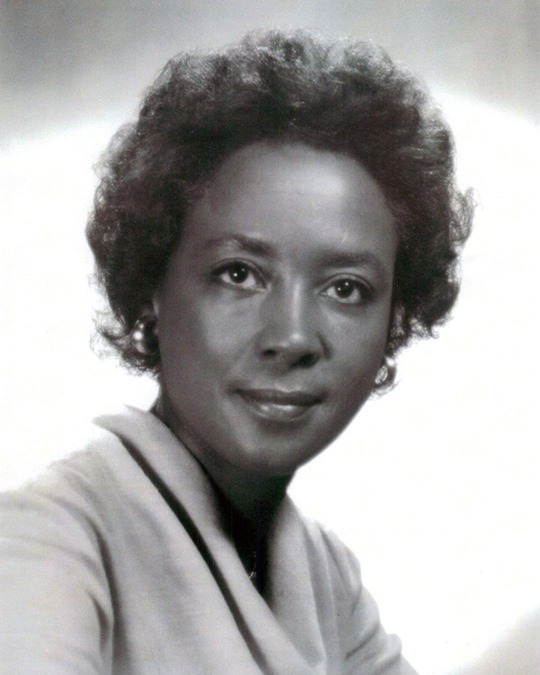
Annie J. Easley (April 23, 1933 – June 25, 2011) was an African-American computer scientist, mathematician, and rocket scientist. She worked for the Lewis Research Center of the National Aeronautics and Space Administration (NASA) and its predecessor, the National Advisory Committee for Aeronautics (NACA). She was a leading member of the team which developed software for the Centaur rocket stage and one of the first African-Americans in her field.
In 1955, she read a local newspaper article about a story on twin sisters who worked for the National Advisory Committee for Aeronautics (NACA) as “computers” and the next day she applied for a job. Within two weeks she was hired, one of four African Americans of about 2500 employees. She began her career in as a Mathematician and Computer Engineer at the NACA Lewis Flight Propulsion Laboratory (which became NASA Lewis Research Center, 1958–1999, and subsequently the John H. Glenn Research Center) in Cleveland, Ohio. She continued her education while working for the agency and in 1977, she obtained a Bachelor of Science in Mathematics from Cleveland State University. As part of a continuing education, Easley worked through specialization courses offered by NASA.
Her 34-year career included developing and implementing computer code that analyzed alternative power technologies, supported the Centaur high-energy upper rocket stage, determined solar, wind and energy projects, identified energy conversion systems and alternative systems to solve energy problems. Her energy assignments included studies to determine the life use of storage batteries, such as those used in electric utility vehicles. Her computer applications have been used to identify energy conversion systems that offer the improvement over commercially available technologies. She retired in 1989 (some sources say 1991).
Easley’s work with the Centaur project helped as technological foundations for the space shuttle launches and launches of communication, military and weather satellites. Her work contributed to the 1997 flight to Saturn of the Cassini probe, the launcher of which had the Centaur as its upper stage.
Annie Easley was interviewed in Cleveland, on August 21, 2001 by Sandra Johnson. The interview is stored in the National Aeronautics and Space Administration Johnson Space Center Oral History Program. The 55 page interview transcript includes material on the history of the Civil Rights Movement, Glenn Research Center, Johnson Space Center, space flight, and the contribution of women to space flight
6 notes
·
View notes
Text



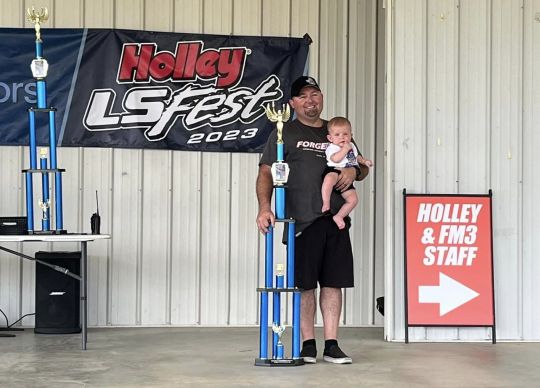
All hail the champion. Congrats to Joe Gregory for winning the 2023 Holley LS Fest Truck Class Grand Champion title! Joe’s 1985 Chevrolet Square Body Stepside truck is powered by a 427ci Lewis Roberts LS7 mated to a Bowler Performance Transmissions Tremec T56 Magnum 6-speed manual transmission and rides on a No Limit Engineering chassis, Viking Performance coilovers, Brembo disc brakes, 335/30ZR18 BFGoodrich Rival S tires, and 18x12 Forgeline forged three piece AL300 wheels finished with Satin Black centers & Gloss Black outers! See more at: https://forgeline.com/customer-gallery/joe-gregory-3
🇺🇸🇺🇸🇺🇸
Forgeline formed in 1994 with the express purpose of manufacturing USA-made custom lightweight forged wheels for road racing applications. For 30 years since, we’ve built our reputation by engineering and manufacturing wheels that can withstand the extreme demands of sports car racing. With an unwavering commitment to strength, safety, and performance, we’ve earned our place on some of the world’s fastest track cars, including the factory-engineered Chevrolet C8 Corvette GT3.R, Chevrolet Camaro GT4.R, Ford Mustang GT4, and Hennessey Venom F5 Revolution. We continue to manufacture our forged wheels in Dayton, Ohio using exclusively U.S.-sourced parts, including our industry-leading APP aluminum forgings that meet the most stringent aerospace and defense industry specifications. Don’t settle for anything less.
Photos courtesy of Leyton Mullins and In the Garage Media
#forgeline#forgelinewheels#forgedwheels#customwheels#AL300#ForgelineAL300#notjustanotherprettywheel#doyourhomework#madeinUSA#protouring#chevrolet#chevy#C10#85C10#squarebody#pickup#truck#2023LSFest#LSFestGrandChampion
16 notes
·
View notes
Photo

Ohio by Avneesh Balyan
1 note
·
View note
Text

Glow in Highbanks Ravine
Seen near Lewis Center, Ohio.
#Lewis Center#Ohio#Fall#Autumn#Fall Foliage#Fall Colors#Forest#Trees#Ravine#Yellow#Warm#Golden#Creek#Water#October#2024
3 notes
·
View notes
Text
0 notes
Link
1 min readPreparations for Next Moonwalk Simulations Underway (and Underwater) While on tour, Team NEO representatives stop to take a photo by the dedication plaque for NASA’s Neil Armstrong Test Facility in Sandusky, Ohio. Left to right: Nico Samaniego, Christine Nelson, Peter Zahirsky, Kathleen Meehan, Bryce Sylvester, David Ebersole, and Camille Billups.Credit: NASA/Erin Bukach Representatives from Team NEO toured several facilities at NASA’s Glenn Research Center on April 24. Team NEO is the designated Northeast Ohio JobsOhio Network Partner that works to expand business, establish partnerships, and create jobs. The visitors toured facilities at NASA’s Neil Armstrong Test Facility in Sandusky and Lewis Field in Cleveland, including the Space Environments Complex, Cryogenics Component Lab, Altitude Combustion Stand, Administration Building, and Flight Research Building (hangar) with the intent to learn more about Enhanced Use Lease opportunities at NASA Glenn. Team NEO can assist NASA Glenn in finding potential occupants for underutilized facilities that would benefit the center and boost economic growth in Northeast Ohio. Return to Newsletter Explore More 1 min read NASA Glenn Joins COSI’s Big Science Celebration Article 1 min ago 1 min read NASA Glenn Research Highlighted in Tape Exhibit Article 1 min ago 2 min read Glenn Digital Specialists Earn NASA Awards Article 2 mins ago
2 notes
·
View notes
Text

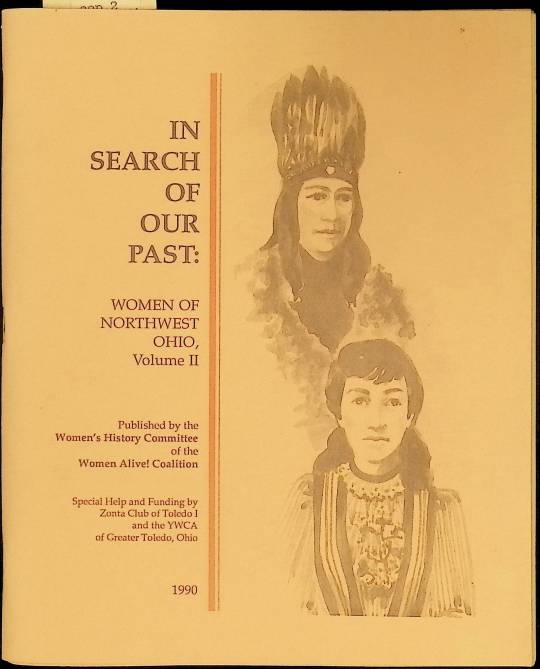

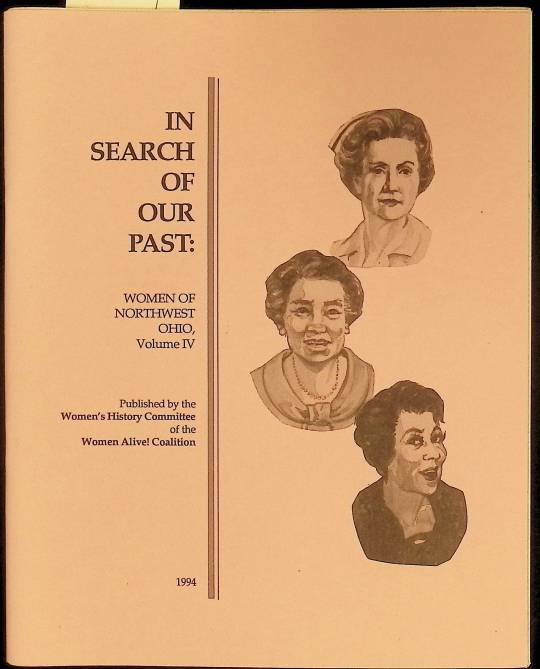

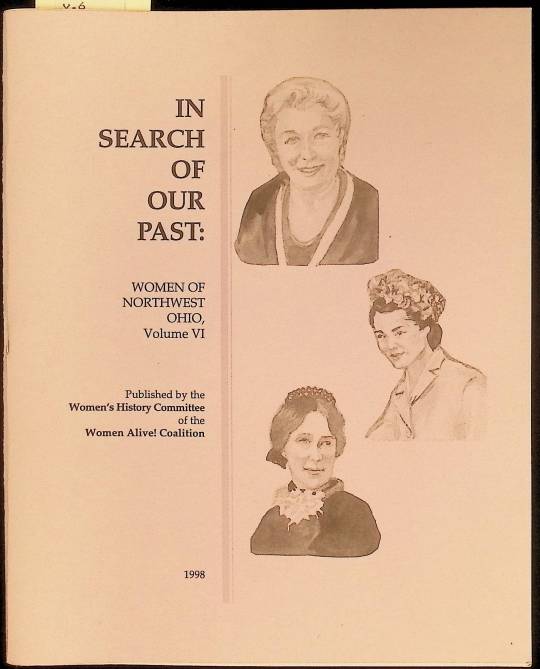
In Search of Our Past: Women of Northwest Ohio (1987-1998) by the Women Alive! Coalition
The Women Alive! Coalition sought to celebrate women's organizations in Toledo, Ohio. Starting in 1987, they published a series of six books with biographies of important women from the Northwest Ohio area. Rosa B. Lewis, Ph.D., chair of the Women's History Committee, writes in the preface of volume I:
The Committee members felt a need to know about people who have been ignored in traditional histories. Through our effort to flesh out this past, we have developed a sense of continuity and accomplishment as women ourselves. All of us have come to identify with our subjects and have, in a sense, come to feel that their memories depend on us and that we are responsible for them.
If you would like to learn more about the Women Alive! Coalition, their archives are in BGSU's Center for Archival Collections.
The women on the covers of each volume are:
Josephine St. Pierre Ruffin, Florida (Bertie) Ruffin Ridley, and Constance Ridley Heslip
Sweet Breeze Wells and Mary Ann Wells Wolcott
Elizabeth Lamson Chamberlin, Bernice A. Phelps, and Elenore Johnson Weber
Frances Alexander Belcher, Edna E, Sharritt, and Jung See Sing
Frieda Houlles Sfakianos (Paraskevi Houli), Alzina Parsons Stevens, and Evelyn (Eve) Weiher
Betty Hossler Timko, Lillian (Billie) Durbin Reuben, and Lucy Hayes
The Browne Popular Culture Library (BPCL), founded in 1969, is the most comprehensive archive of its kind in the United States. Our focus and mission is to acquire and preserve research materials on American Popular Culture (post 1876) for curricular and research use. Visit our website at https://www.bgsu.edu/library/pcl.html.
2 notes
·
View notes
Text
The shameful Vietnam War policy that recruited low-IQ men to die for their country
Louis H. Pumphrey (Opinion)
Published: May. 26, 2019, 5:28 a.m.
SHAKER HEIGHTS, Ohio -- As we approach Memorial Day honoring our war dead, take a few minutes to reflect on our government’s most sordid, disgraceful, unconscionable, ignoble and shameful policy during the Vietnam War: The Johnson administration’s “Project 100,000” program instituted in October 1966, which involved the drafting of low-IQ men as the war escalated. Of the 58,220 of our military who died in Vietnam, 5,478 mentally deficient servicemen were killed, most in combat.
The latter statistic was provided in the Fall 2017 edition of The Veteran, a publication of Vietnam Veterans Against the War, in a story written by Hamilton Gregory, author of “McNamara’s Folly: The Use of Low-IQ Troops in the Vietnam War.”
Gregory enlisted in the U.S. Army after graduation from college. While at an armed forces induction center in Nashville, Tennessee, a sergeant ordered him to “take charge” of Johnny Gupton (not his real name). The sergeant instructed Gregory to “go with him every step of the way” during their basic training at Fort Benning, Georgia.
The sergeant said Gupton could not read or write and would require assistance in completing documents at Fort Benning. Then the sergeant said, “Make sure he doesn’t get lost. He’s one of McNamara’s morons.”
Gupton was among men with low IQs drafted in a program that resulted in the addition of 354,000 low-IQ men into the armed forces, with 71 percent sent into the U.S. Army; the Navy and Marines each getting 10 percent; and 9 percent going into the Air Force, according to Gregory.
The reason, as you might imagine, was that President Lyndon B. Johnson and Secretary of Defense Robert S. McNamara were “desperate for warm bodies,” wrote Gregory. Earlier, the draftees had failed the mental acuity test administered by the military and therefore had been out of reach of the draft, but the Johnson administration changed that policy.
The program also encompassed not only those with below-normal IQs, but also men with other mental or physical disabilities. There was a higher number of volunteer recruits in the program compared to the number of draftees, according to a RAND Corp. study of the strategy. Further, the endeavor, in addition to being applied to those who had failed mental acuity tests, also included men who had been unable to meet other eligibility criteria.
Gregory reported that, when he was on his way to Fort Benning with Gupton, he asked his charge what state he was from and Gupton said he did not know. Gupton, Gregory wrote, was unaware the United States was at war, had no understanding of basic training, did not know his left from his right and had to be taught how to tie his boots.
Gupton survived his tour in Vietnam because a sergeant took him under his wing, putting him in noncombat jobs. (The sergeant grew up with a sister who he said was “mentally handicapped,” and was sympathetic to Gupton’s condition.)
One of the low-IQ fatalities, Gregory noted, was a nephew of combat veteran Barry Romo. The nephew, Robert, was in Vietnam for part of the time Romo served as a platoon leader. Romo was very worried about his kin, who he said was “like a brother,” because the new draftee was to be trained as an infantryman at Fort Lewis, Washington.
Gregory reported that a contingent of the nephew’s family, along with Fort Lewis recruits, officers and sergeants, wrote to the military base’s commanding general pleading that the recruit be spared combat duty because, as one relative wrote, “he would die.”
The general refused to budge.
Romo’s nephew was sent to Vietnam and was in combat close to the border between South and North Vietnam -- an especially dangerous area. While on a patrol and attempting to aid a wounded soldier, Robert was shot in the neck. Intense gunfire prevented a medic from treating Robert and he “drowned in his own blood,” said Romo.
The army gave Romo permission to accompany the sealed aluminum casket with Robert’s remains to Rialto, California, for his funeral. Romo said in a speech several years later that his nephew’s family never recovered from his death, which “almost destroyed us with anger and sorrow.”
Gregory concluded his story in The Veteran with a quote from Joseph Galloway, a war correspondent: “The Good Book says we must forgive those who trespass against us -- but what about those who trespass against the most helpless among us: those willing to conscript the mentally handicapped, the most innocent, and turn them into cannon fodder?”
Drafted in 1966, Louis H. Pumphrey was a reporter, then editor, for the U.S. Army’s 1st Infantry Division newspaper in Vietnam from July 1967 to July 1968. He is a member of Chapter 39 of Veterans for Peace, based at a Cleveland Heights church.
2 notes
·
View notes